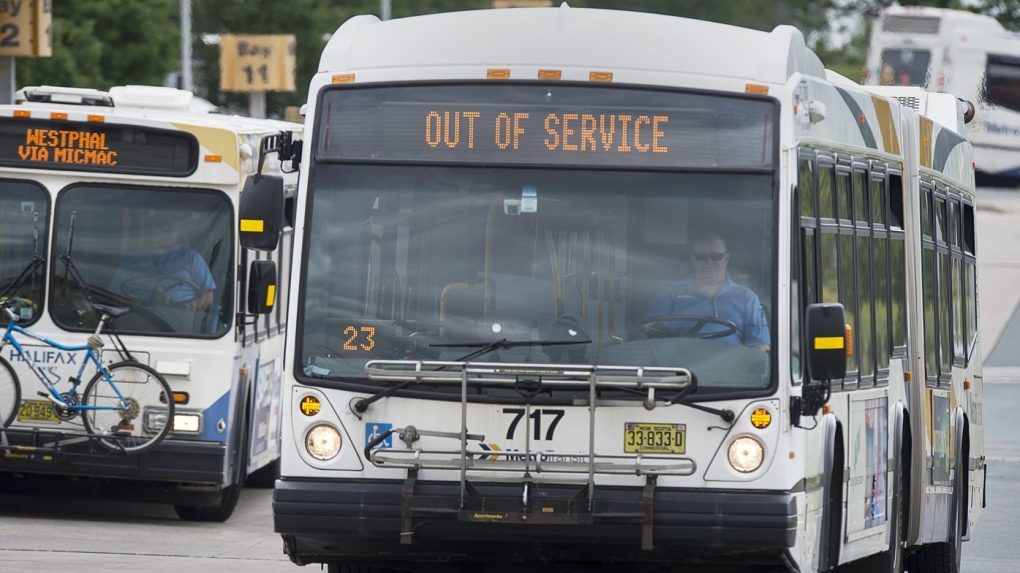
HALIFAX – Canadian cities should be nimble and prioritize service if they want to sustain and strengthen public transit systems in a time of declining ridership and labour challenges, a transit researcher says.
While cities like Montreal and Halifax are reducing bus routes to save money or deal with staff shortages, a transit and rail research consultant and postdoctoral fellow at the University of Toronto says these decisions contribute to a transportation «death spiral.»
«There are two negative feedback loops going on in transit,» Willem Klumpenhouwer said in a recent interview. When routes are cut and transit is less frequent or convenient, ridership declines. When there are fewer riders paying fares, cities lose income and are inclined to further reduce routes.
«Then you have a death spiral, as people call it,» he said.
This same cycle is affecting transit labour, Klumpenhouwer said, because as transit operators leave the job, remaining staff are asked to work more hours. «That leads to higher attrition and less hiring, so there’s that same feedback loop.»
Shane O’Leary, president of Amalgamated Transit Union Local 508, which represents transit operators in Halifax, said the city has been losing staff at an unprecedented rate over the past year as workers deal with extended work hours and frustrated transit riders who are upset by service reductions.
O’Leary gave the example of someone on their way to work who’s waiting for a bus that doesn’t show up as scheduled.
«Now I’m dealing with possibly being late to work or I’m worrying about child care, and who do I take it out on?» he said.
«Obviously I take it out on the transit operator because they’re the first one I see and I blame it on them. That’s what happens,» he said, calling it a «vicious cycle.»
The union president said interactions with angry transit users make the job harder on operators, many of whom are working 60 to 70 hours a week to manage ongoing staffing shortages.
A spokesperson with the City of Halifax said that beginning this week three routes have been suspended, while three others are being adjusted, and trips are being cut from 30 routes. Maggie-Jane Spray said in an email that the service cuts have been developed with «consideration to both employee and passenger impact.»
Spray said that these reductions will permit transit to be more consistent and «allow passengers to better plan their trips, but it will also reduce workloads and stress for employees to improve retention.»
O’Leary said the city could improve recruitment and retention by raising wages and improving job conditions — «not by making transit more inconvenient for the passengers.»
Halifax pays its transit operators $21.45 per hour for training and $22.88 per hour in the first year of work, which rises to a maximum hourly pay of $28.61 after four years. Operators who drive the city’s accessible buses make about $2 less an hour, O’Leary added.
In Montreal, the city’s transit agency said in January it would readjust some of its schedules because of the «current context,» adding that it could no longer guarantee a wait time of 10 minutes or less between buses on any of its lines during rush hour.
Last week, the Societe de Transport de Montreal announced it was planning to reduce expenses by $18 million, but it said the cuts wouldn’t affect service.
Toronto’s budget, which was approved in mid-February, proposed a five per cent cut in transit service compared to last year, or a nine per cent cut compared to pre-pandemic levels. Critics said that decision was at odds with efforts to bring back ridership and make the system safer.
Former mayor John Tory, who resigned shortly after seeing his budget through, defended the plan by pointing out it increases the city’s subsidy to the Toronto Transit Commission by $53 million and that service levels remain above ridership, which he said the budget estimates is about 73 per cent of pre-pandemic levels.
Klumpenhouwer said that just about all Canadian cities saw a dramatic drop in ridership because of COVID-19, adding that many cities are still seeing fewer riders than prior to the pandemic. The drop in transit use is likely tied to adjusted commuting habits and the shift to remote work, and he said transit agencies should rejig routes accordingly.
«We need to think about how we get trips going elsewhere and that’s the tricky part, because it requires you to redesign your network a little bit,» he said.
It’s common for cities to prioritize routes that take many people to a central location, like a downtown. To encourage new transit habits, Klumpenhouwer said, routes should instead focus on a model that supports people travelling to a wider range of locations.
«The theory says this should result in increased ridership, but it will take time and the question is how much financial flexibility an agency has to do that kind of thing,» Klumpenhouwer said.
The researcher said that an exception to this trend is Brampton, Ont., where there are even more transit users now than there were in 2019 and early 2020.
«They do the important things,» Klumpenhouwer said of the city.
«They run frequent service that’s on a grid, making it easy to get from one place to another. They’ve got transit priority lanes, and really all the fundamentals in place.»
He said the city is an example of successful public transit, adding that its model allows residents to rely on the service.
«The No. 1 thing to get more people to ride is to just run more service.»